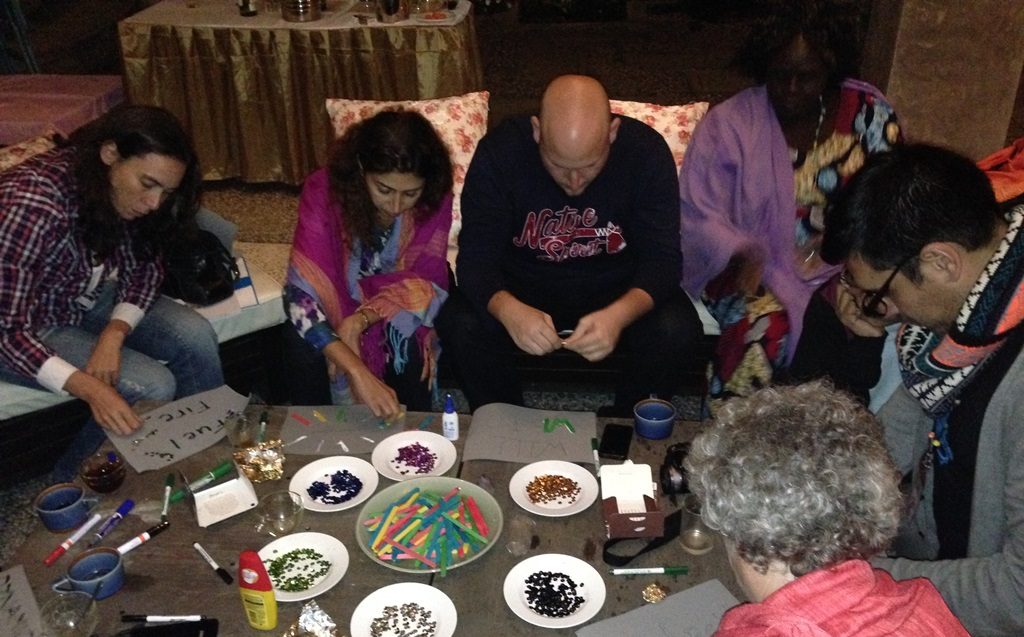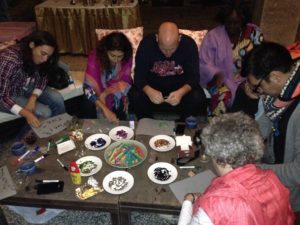This post is cross-posted from DIYToolkit where it appeared as a guest post.
Earlier this year I worked with Ci2iGlobal, a global group of social entrepreneurs and NGO practitioners, to organise a Learn and Share Lab focusing on lessons learned around co-creation. The event itself modelled a co-creative approach, and featured 14 case studies of co-creative initiatives that were discussed both in facilitated and open space. As a global group spanning numerous time zones and languages, and looking to maximize input from attendees, having a focus on accessible and practical tools was an important element for us.
A variety of tools
Our tool choice was primarily guided by the goals of:
(1) Co-creative design and facilitation
(2) Interactive participation
(3) Ongoing discussion after the in-person event
A few months before the lab, a call went out through blog posts, social media, e-mail and other ‘broadcast’ tools to Ci2iGlobal’s networks asking for co-creation case studies in impact and innovation. Co-creation and co-creative impact are hard terms to define, but the 21 case studies submitted showed us that the term has a cross-cutting ability to capture how more inclusive change is happening in all kinds of contexts.
To consider how to organise the case studies for further review and discussion, Ci2iGlobal partner Christina Jordan prepared a matrix, and the core team members then individually ranked each of the submissions. The case studies with all round high scores were accepted, those with lower scores were regretfully eliminated, and those that had middling scores were discussed by the group to choose the final 14.
Each core team member then partnered with the leads of the 14 co-creative efforts to help organise their thoughts and presentations for maximum in-person discussion, and eventual written document archiving. As well as using Skype, a Facebook page was created for Lab attendees to begin discussions prior to the in-person event. This ‘virtual discussion’ space is especially useful to help facilitate both individual and collective discussions and connections when people meet in person. It also can provide a place for continued communication after an event.
The core team prepared an agenda for the two-day session via Google docs, which was refined in-person the day before the meeting when we all arrived at the workshop location. During the session, the eight members of the core team took turns facilitating sessions, as did other Lab participants who volunteered to do so. To help facilitate the discussion, the formats and tools we used included:
- Opening Circle – having attendees sit in a circle facing each other sets the tone for an interactive session, where everyone can feel free to participate and engage with each other. Adding a talking stick to the circle also helps to send the message that although there is no one leader and lead roles will be shared, when someone does have the lead or has asked to talk, the group is expected to give full attention to that individual.
- Open Space – this allows attendees to help develop the agenda for a given session (or a whole workshop) rather than being given an already developed agenda by the workshop/conference organisers.
- World Café– small groups (around four or five people) converse together around tables about a common topic. After the first conversation, someone stays at the table as a ‘host’, while the others move to a new table. The host summarises what has taken place at that table and those who are new share their previous conversations. In this way, the threads of the various conversations are woven together.
- Artistic Visualisation – a hands-on art activity that incorporates the themes of the event and helps to illustrate them.
- Mapping – this involves collecting information verbally from attendees on a given topic area of interest, and then recording it on a flipchart or some type of ‘map’ that the group can logically follow. For example, you might gather information on who is using co-creation tools and where or how they are using them. A map flows better than a standard chart (with horizontal and vertical columns) and allows you to better see linkages.
Ongoing tool identification and use
A list of co-creation tools that could help build on the workshop was also collected during the Lab and shared in an accessible online document.
After the event, attendees were encouraged to keep the discussion going via Ci2iGlobal sponsored sites (such as the Facebook page mentioned above and Ci2iGlobal website), participating in sites sponsored by attendees (such as Edgeryders) and by blogging.
Some attendees, through connections developed during the lab, have continued to work together on co-creative projects. Making virtual tools available prior to and after the event was an important part of the energy and synergies created both during the event and after.
The lab helped us test the theory – and gain some evidence – that when a group of people come together from many different cultures, countries and languages who have not previously met each other, co-creative tools can help create fairly quick connections and a deep sense of shared purpose.

